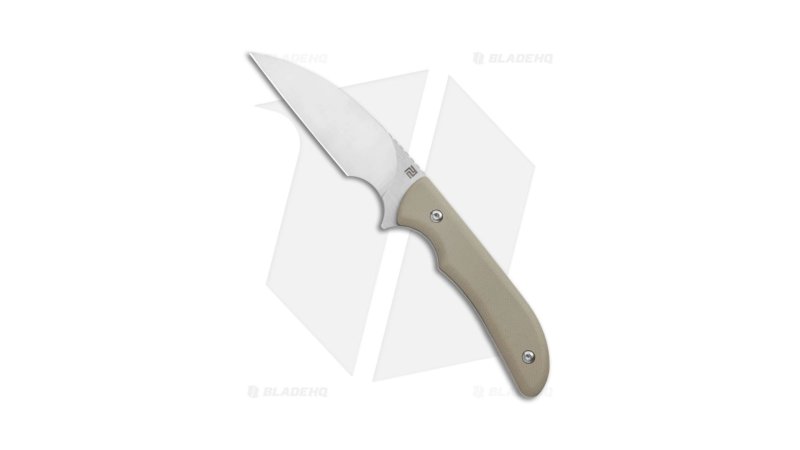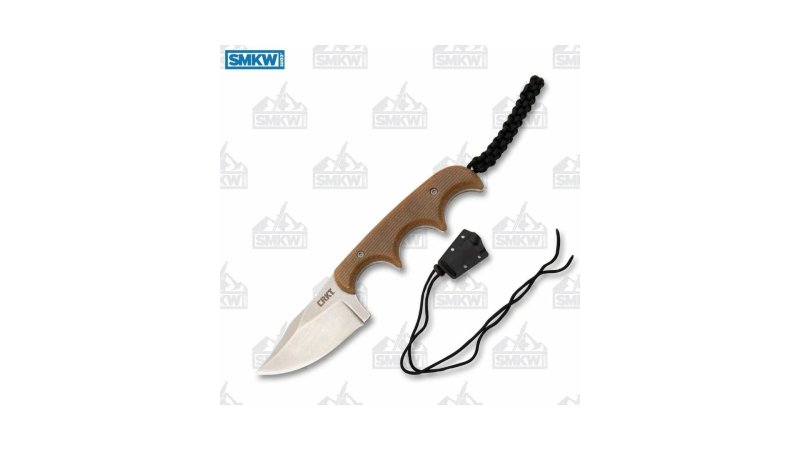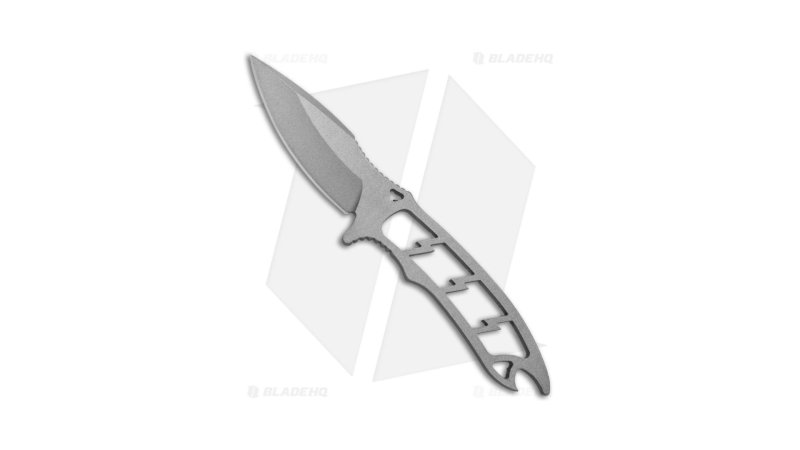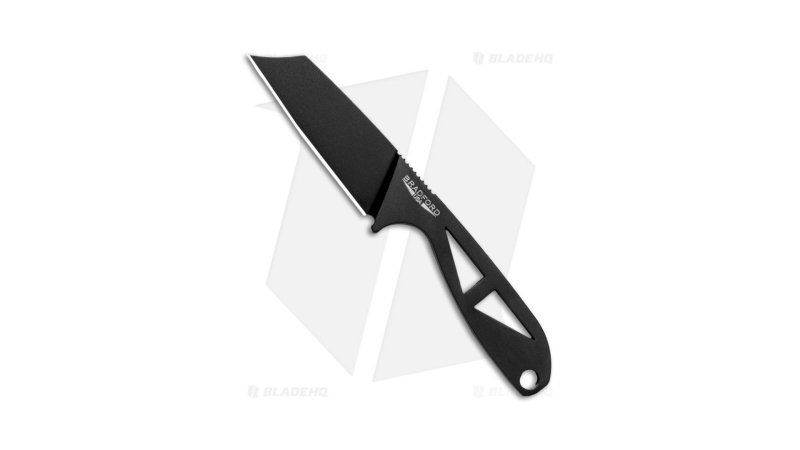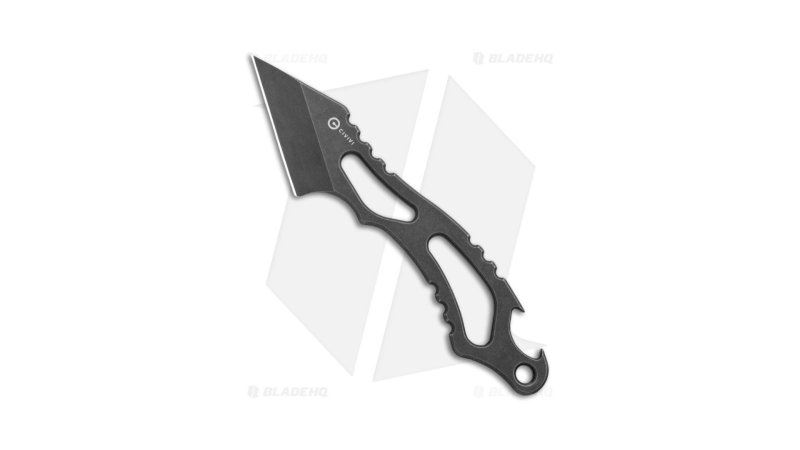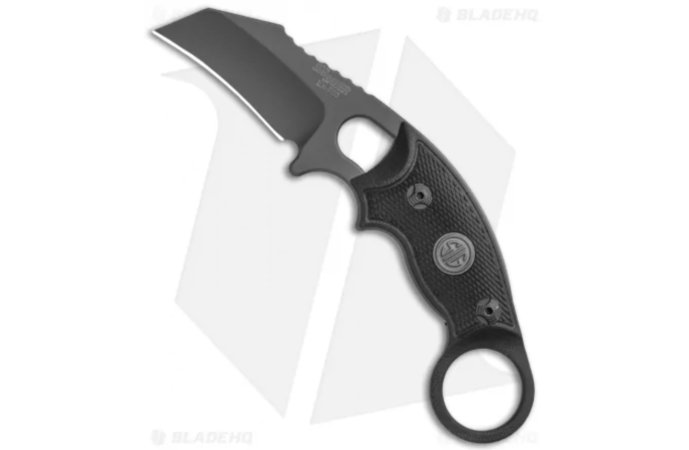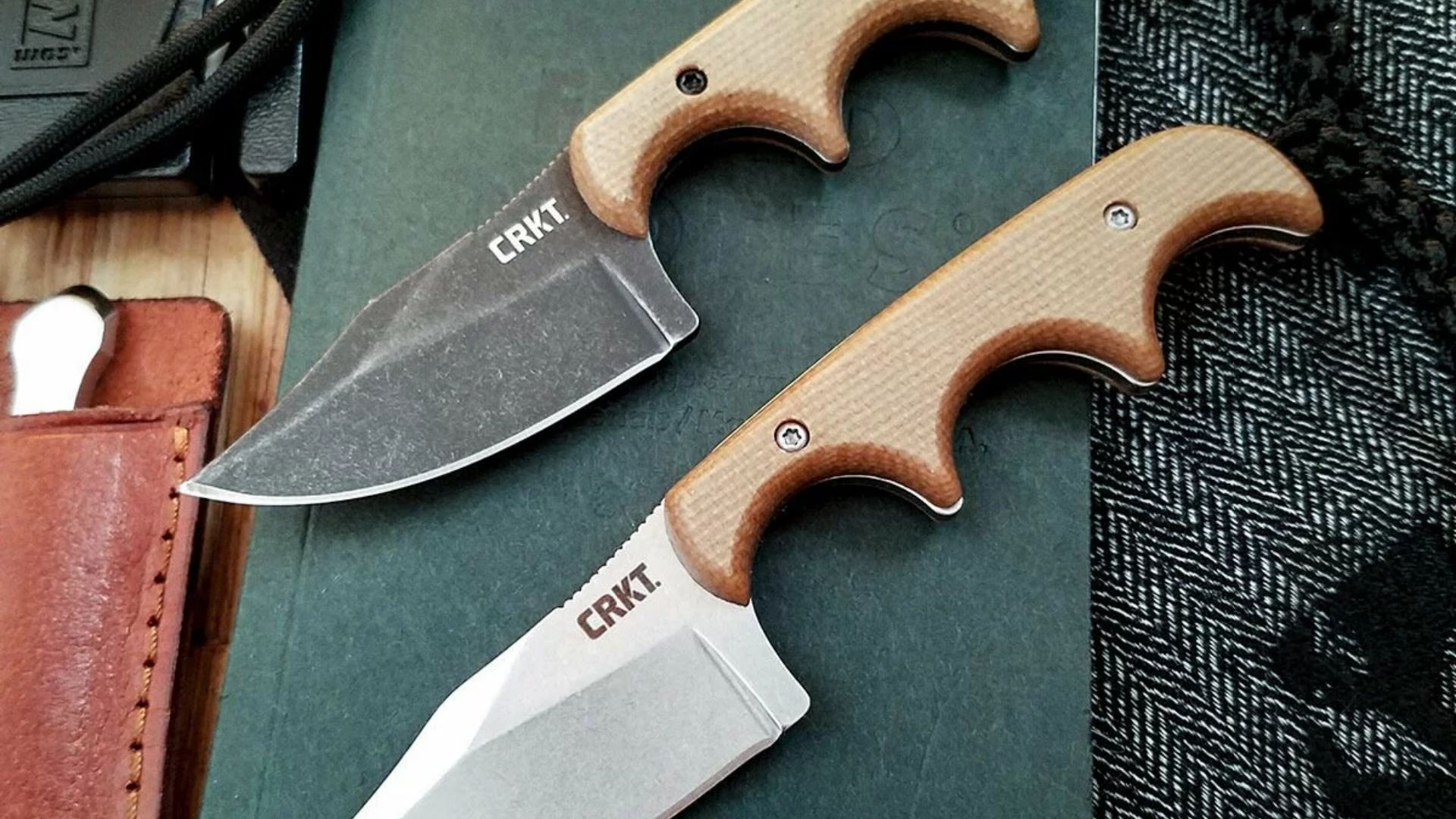

We may earn revenue from the products available on this page and participate in affiliate programs.
A neck knife is a smaller fixed-blade knife that’s carried by suspending the sheath from your neck with a cord or chain. Its widespread use is such that it’s almost impossible to narrow down its exact origins, but cultures all over the world had their own variants, from indigenous peoples to the Vikings. They’re frequently used for utilitarian purposes, though there are variants designed as last-ditch blades for self-defense, frequently in the form of a push-dagger or karambit.
Chances are you’ve seen a depiction of a mountain man, Native American, or hunter wearing a neck knife at some point, and I know I personally have worn several during my brief-yet-cringey tenure as a “mall ninja.” They’re a great option for people with limited pocket or belt real estate, such as rock climbers or kayakers. Whether you’re looking for a blade for everyday carry, self-defense, adventuring, or just a backup, to your backup, to your backup, we’re here with some of the best neck knives on the market that made the cut.
Methodology
A self-described knife nerd, I’ve dabbled in blacksmithing, martial arts, and competitive shooting in the past. My past reviews for Task & Purpose include the Cold Steel American Lawman, WE Stonefish, Leatherman Curl, Cold Steel Storm Cloud, and Spyderco Slip Stone.
We chose our top picks by looking at neck knives at various price points, and then assessing which had the best customer reviews and highest ratings. We then examined the durability and versatility, along with the materials and quality control that went into making each knife. Neck knives that had mystery steel, bad ergonomics, or poorly designed sheaths were eliminated.
Best Overall
Artisan Cutlery Sea Snake
Pros
- Budget-friendly
- AR-RPM9 steel is easy to sharpen
- Ergonomic G10 handle with generous finger choil
Cons
- Lower edge retention than higher-end steel
Product Specs
- Blade length: 3.125 inches
- Blade material: AR-RPM9
- Blade finish: Bead-blasted
- Handle material: G10
- Blade shape: Wharncliffe
- Sheath material: Kydex
- Weight: 2.3 ounces
- Weight with sheath: 3.1 ounces
Best Value
SMKW Exclusive CRKT Foltz Minimalist Bowie
Pros
- Upgraded to D2 steel
- Ergonomic grip
- Lightweight
Cons
- Three finger grip
- No blade coating
Product Specs
- Blade length: 2.13 inches
- Blade material: D2
- Blade finish: Bead-blasted
- Blade shape: Clip point
- Handle material: Micarta
- Weight: 1.6 ounces
- Weight with sheath: 2.2 ounces
- Sheath material: Zytel
Editor’s Choice
Attleboro Knives Dau Tranh
Pros
- Premium 20cv steel
- Bottle-opener pommel
- Corrosion-resistant Cerakote finish
- Made in the USA
Cons
- Price
Product Specs
- Blade length: 2.5 inches
- Blade material: CPM 20CV
- Blade finish: Cerakote
- Blade shape: Spear point
- Weight: 2 ounces
- Weight with sheath: 3.2 ounces
- Sheath material: Kydex
Best EDC Neck Knife
CIVIVI Minimis
Pros
- CNC-machined to high tolerances
- Good edge retention
- Good corrosion resistance
- Simple yet attractive design
Cons
- Small
Product Specs
- Blade length: 2.22 inches
- Blade material: 10Cr15CoMoV
- Blade finish: Black stonewash
- Blade shape: Drop point
- Weight with sheath: 0.96 ounces
- Sheath material: Kydex
Best Backpacking Neck Knife
Bradford Knives G-Cleaver
Pros
- Premium Elmax steel
- Extremely durable DLC coating
- Sheath accepts G-clips/mini TekLoks
- Made in the USA
- Thick handle
Cons
- Thick handle
Product Specs
- Blade length: 2.75 inches
- Blade material: Elmax
- Blade finish: DLC
- Blade shape: Cleaver
- Weight: 2.7 ounces
- Weight with sheath: 4.1 ounces
- Sheath material: Kydex
Best EDC Neck Knife
CIVIVI De Santis Kiri-EDC
Product Specs
- Blade length: 1.8 inches
- Blade material: 9Cr18MoV
- Blade finish: Black stonewash
- Blade shape: Kiridashi
- Weight: 1.55 ounces
- Sheath material: Kydex
Best Tactical Neck Knife
Hogue EX-F03 Hawkbill
Pros
- Quality 154cm steel
- Finger ring aids unsheathing and retention
- Includes two sheaths
- Made in the USA
Cons
- G10 finger ring slightly less durable than steel
Product Specs
- Blade length: 2.25 inches
- Blade material: 154cm
- Blade finish: Stonewash
- Blade shape: Hawkbill
- Handle material: G10
- Weight: 3.13 ounces
- Weight with sheath: 5.2 ounces
- Sheath material: Nylon/boltaron
Key features of neck knives
Sheath
Arguably the most critical feature, the sheath is frequently the make-or-break for a neck knife. Older sheaths were typically made from leather, and oriented with the handle up. While gravity kept the blade fairly secure in the sheath, drawing the knife was a two-handed process, limiting its efficacy in emergencies. This was rectified with the innovation of a retention strap that allowed the knife to hang with the handle down, permitting a one-handed draw (though still requiring two hands to resheath it).
Most modern variants nowadays come with some variant of thermoplastic sheath (Kydex, Boltaron, etc.), which are molded to retain the knife without any need for a retention strap. Thermoplastic sheaths tend to loosen up over time with use, so while you don’t want it to be so tight that you can’t easily draw the blade, it’s even less desirable for it to start off loose.
Additionally, if you’re wearing it under your shirt, you’ll want the sheath to be as small and low profile as possible to keep it from printing through the material. No point in concealing it if everyone and their mother can tell you’re wearing it. The last factor to consider is versatility. The sheath that comes with the Cold Steel Double Agent series is a huge malefactor of this. It uses a polymer tab to hold the blade into the decidedly loose sheath. Aside from the fact that it doesn’t do a very good job at that (I’ve had multiple instances of the blade dropping out of my shirt at the most inopportune time — sorry again, Reverend M.), it’s also limited exclusively to right-handed use. At the end of the day, a neck knife is only as good as its sheath.
Cord/chain
You’ll need something to hang the knife from your neck, whether it’s a length of cord or a breakaway ball chain. Both have their own advantages and disadvantages. For example, the cord can become a choking hazard if it snags on something; the breakaway ball chain commonly found on dog tags fixes this issue but can be uncomfortable as it can pull chest hair.
Blade
The possibilities for blade types are numerous and are only really limited by how small the neck knife is. For everyday carry or utility, drop point, Wharncliffe, tanto, and clip points are all viable options. For self-defense purposes, however, you’ll need a more specialized blade type to offset the blade length disadvantage, mainly represented by karambits and push daggers.
Benefits of neck knives
Size
While there are always exceptions, in general, neck knives tend to be rather small, typically between two to four inches in blade length. This not only makes them easier to conceal, but also makes them less ungainly to wear regularly. An unintentional side-effect of this is that they’re easier to sharpen than other, larger fixed blades, as there’s simply less steel to sharpen. This can make it a viable option for hikers, hunters, and adventurers due to being easily maintained in the field.
Lightweight
By extension, most neck knives are also lightweight as a result of their size. You wouldn’t want a kukri hung from your neck, any more than you’d want a bowling ball hung there. This makes them easy to carry comfortably, to the point you almost forget that it’s even there.
Pricing
Budget
Plenty of neck knives are budget-friendly and priced under $100. You’ll find quite a few decent fixed blades in this price range. If you just need something as soon as possible for self-defense, an expendable tool, or if your inner Scrooge absolutely has to pinch those pennies, this might be for you.
Mid-range
If you’re looking for a neck knife that offers the best bang for your buck, you’ll find most of those in the mid-tier range of $100 to $300. These knives will tend to be made with better materials, designs, and overall much better quality control.
Premium
Only accepting the best of the best? You’ll want to look in the $300-and-up price range. Here’s where you’ll find specialized neck knives or customs, and they’ll typically come with premium materials and a great warranty.
FAQs on neck knives
You’ve got questions, Task & Purpose has answers.
Q: Are neck knives practical?
A: It depends entirely on what you plan to use it for. If you’re carrying it concealed for self-defense, it will be slower to access than a lot of alternatives, not to mention smaller. If you’re using it for everyday carry, it’ll probably come in handy for the odd job. However, the stereotypically smaller handles aren’t typically comfortable for extended use. I typically only carried a neck knife as my backup, to my backup, to my backup, and it only really got used when I lent it to someone unfamiliar with the various locking mechanisms of folding knives.
Q: Are neck knives legal?
A: Neck knives are legal in most states, but it depends on your state’s knife laws and local restrictions. Laws that limit your blade length or ban carrying concealed fixed blades can severely limit your options. To check out your state’s knife laws, click here.
Q: Are there any alternatives to carrying a neck knife around your neck?
A: Absolutely. I’ve carried a few neck knives on my belt, in my pocket, or shoved in my boot. There are also various shoulder harness setups like the Galco SHUKA that can offer even better concealment.
